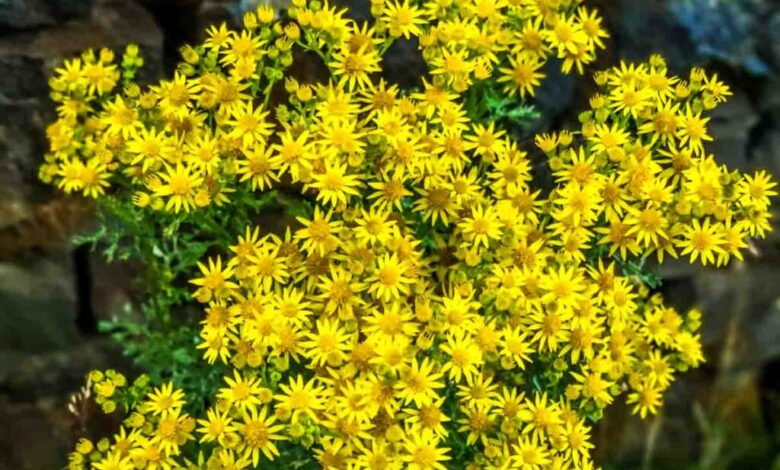The Pretty and Everlasting Daisy Flower

One of my favourite sights at the beginning of summer is the emergence of the daisies, as they pop up on lawns and cover the fields. I think they signify that things are starting to wake up after the dark long winter months.
Daisies come from the Asteraceae family, which is considered to be the archetypal species of the name daisy. There are many different types of daisies, a few of which I will cover in this article below.

The Common Daisy
Origin of name
Scientific name of Bellis perennis, the European species of daisy, also known as a lawn or English daisy.
Bellis, translated from Latin means ‘pretty’ and perennis means ‘everlasting’.
The actual name daisy could have been translated from ‘day’s eye’. This is because the daisy head closed at night and opens in the morning. Geoffrey Chaucer (English Poet) called it ‘eye of the day’ and in Medieval times, it was known as ‘Mary’s Rose’.
Features
It is a perennial herbaceous plant (meaning that it lives for more than 2 years, dies in winter and regrows in spring). It grows to about 20 cm in height with a mass of roots and rosettes of rounded leaves up to 5 cm long.
They are a composite flower, which can be formed from a small cluster to hundreds or thousands of flowers which put together makes flowerhead. The flowerhead has white petals (often tipped red) with a yellow disc centre.
Habitat
It is mainly found in western, central and northern parts of Europe. Although now widely naturalised, it does grow in America and Australia.
Growing Season
Common daisies generally flower from around April – September (quite a long flowering season). It can grow in temperatures above -35oC, in full or partial sun. It is therefore quite hardy and can even flower in mid-winter. It can be propagated by seed or after the last frost and even separation after flowering.
Uses
The leaves of this daisy can be eaten raw in salads or even cooked. The buds and petals can be eaten raw in sandwiches, soups and salads. It can even be used to make tea and as a vitamin supplement.
Traditions
The Common daisy was and probably still is popular for making daisy chains. I remember spending many a happy hour sat in a field as a child making these chains. There is a certain art to it and they can easily be broken. A lot of patience is required, worth the effort though.
Oxeye Daisy

Origin of name
Latin name Leucanthemum vulgare. Other names include Oxeye, Dog daisy or Marguerite (more on this later). It is native to Europe but also grows in Asia, N. America, Australia and New Zealand.
Description
The Oxeye is like the Common daisy in looks but bigger. It grows to approximately 80 cm in height with creeping underground roots with the largest leaves being at the base of the plant (4-15 cm long, 5 cm wide).
They have a petiole (a stalk that attaches leaf to steam thus enabling the leaf to twist and face the sun). The Oxeye can produce three flowers (like a typical daisy) with each head having between fifteen and forty white petals (1-2 cm long). Flowering occurs from May to October.
It has been described as part of the Chrysanthemum family.
Habitat
It is native to Europe, Georgia and Western Asia. It has been naturalised in many parts of the world including N. America. It grows where rainfall exceeds 750mm and it occupies meadows, fields and can be found in pastures or on roadsides.
It is well known for invading lawns and can’t easily be destroyed. This has made it a problem in pastures where cattle graze as they don’t eat it as a rule and those that do produce unsavoury milk. It can also carry crop diseases and has been declared a weed in Australia (NSW and Victoria).
Uses
The unopened buds can be marinated and used like capers.
It also grows wild in the Arava Desert in Israel. The flowers are picked and dried, this makes a traditional Jewish Herbal tea.
Culture
Apparently, Daisy is a nickname for the girl’s name Margaret, this is after the French name for Oxeye daisy ‘Marguerite’.
I can’t imagine that my Mother-In-Law, Margaret, would have taken kindly to being called Daisy, with being a strong-minded Lancashire woman!
There is also a popular game which was originally played with Oxeye daisies, although we played it with Common daisies. The game of he/she loves me or not (originally of French origin called Effeuiller la Marguerite), tries to establish whether someone likes them or not.
This involves taking the petals off one by one saying ‘he/she loves me or loves me not’ and hopefully ending on the last petal with ‘loves me’. The game goes back to the early 1800’s as shown in an engraved illustration called the Decision of the flower, published in 1820.
Marguerite Daisy

Origin of name
Latin meaning Argyranthemum Frutescens. Known as Paris daisy or Marguerite Daisy. It is native to the Canary Isles. Hybrids have evolved from this species and it has been naturalised in Italy and South California.
Description
It is a perennial shrub, growing to approximately 20-80 cm in height with upright branches. The foliage is green and it produces 4-30 daisy like flower heads with a yellow centre (up to 2cm in diameter).
Habitat
Like other shrubs from the same species this daisy originates from the Canary Isles. It grows on well-drained soil, preferably in full sun and near to the coast. It also needs high quantities of organic matter to grow and can die if overwatered. It can’t survive frost but can grow at altitudes up to 700 metres.
It produces single or double flowered daisy-like flowers in various colours, such as white, pink, yellow and purple.

Culture
The national flower of Denmark is the Marguerite Daisy. In 1940, shortly after the Nazis invaded Denmark Princess Margrethe was born. Soon after this, prominent jewellers started to make Daisy jewellery as a tribute to the new princess. It soon became very popular and helped to create a symbol of patriotism.
Symbolism
The daisy is a symbol of love, innocence, protection and truth. They are given to people as a gesture to make them happy. It is a symbol of sunshine and therefore ideal for brightening grey days.

Conclusion
As you can see the daisy in all its varieties is a fascinating flower with a lot of cultural history and uses, quite a few of which I had not realised.
I think it brightens any garden or indeed fields where it grows. As well as being popular with people it is also a favourite of bees. Daisies in all varieties offer lots of pollen which is a vital source of protein and fat, helping to feed developing larvae. Long may they thrive in our habitats and continue to bring joy and happiness to us all!
Source link



